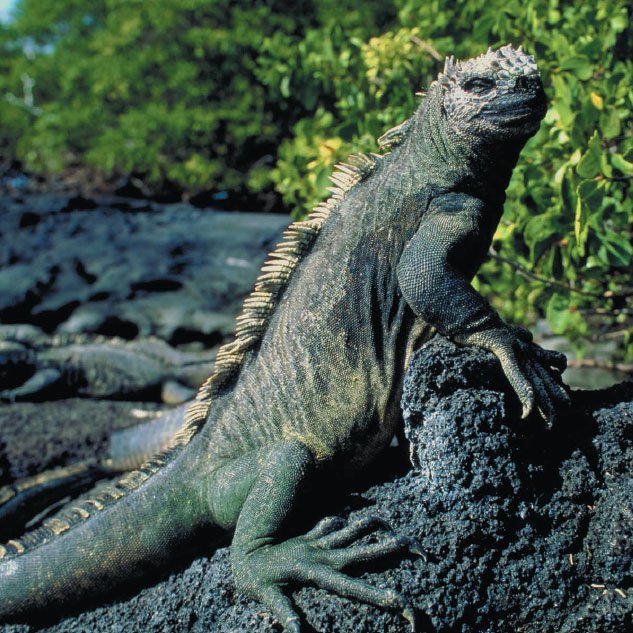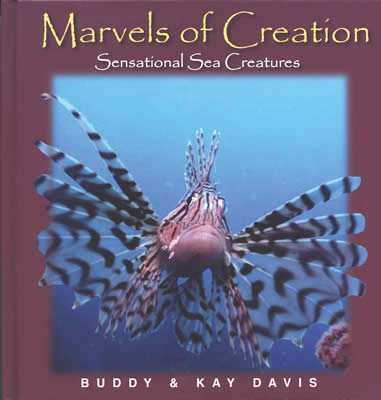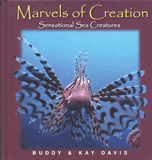Marine Iguana
The marine iguana is found only in the Galapagos Islands. This lizard is very strange-looking with a blunt nose and bony bumps all over its head. It has a heavy body with clumsy-looking legs that have long toes and sharp claws.
There is a crest that runs from its neck to its tail. The tail is somewhat long and flattened and is used for swimming. The marine iguana has salt glands that are located above the eyes connected to the nostrils by ducts. They are known for frequently sneezing water out of their nose to rid their body of excess salt.
Marine iguanas are black or dark gray in color but some have patches or blotches of black, orange, red, or purple, on their bodies, and their front feet and crest are green.
When not feeding, the iguanas form a tight-knit group, even stacking up on top of one another. In the heat of the day, they will seek shelter in a crevice or in the shade of a rock. When basking in the sun, crabs will sometimes walk over the iguana pulling at their skin. The crabs are actually helping the iguanas by pulling ticks from their bodies. Finches will do the same thing.
The diet of the marine iguana consists of algae found in the reefs and along the shores. The sharp claws on the feet prevent the iguana from slipping off the rocks and also keep them from being swept away by the surf. Some iguanas will swim out beyond the surf and dive to feed in the seabed. They can dive up to 35 feet (10.7 m) but their normal range is 15 feet (4.6 m). They can stay submerged 15 to 20 minutes and even longer.
During the breeding season, the male will section off a small territory as his own. They will fight one another but it is mostly for show. They raise themselves up and open their mouth, showing the red lining to ward off competitors. If this does not deter the intruder, a pushing and shoving match will follow.
The female will go to a nesting beach and dig a two-foot (0.6 m) tunnel in the sand. She will then deposit 2 or 3 white eggs and cover them up. After approximately 110 days, baby iguanas will emerge that are about 9 inches (23 cm) in length.
The main enemies of the marine iguana are sharks and man. The young iguanas are caught on shore by herons, gulls, hawks, and sometimes cats.
Marine Iguana
Squamata • Iguanidae
Amblyrhynchus cristatus
Length: 4 feet (1.2 m)
Weight: 2–3 pounds (.9–1.4 kg)
Life span: Unknown
Special Design Feature: The marine iguana
rids its body of excess salt from the sea by
spraying water out of its nose.
Did You Know? The marine iguana is the
only lizard that gets its food from the sea.

Marvels of Creation: Sensational Sea Creatures
Brings the world of the sea alive in a unique and colorful way with photographs, a page of facts and commentaries.
Browse Kids BookRecommended Resources
- © 2024 Answers in Genesis
- Privacy Policy
- Contact
- About


